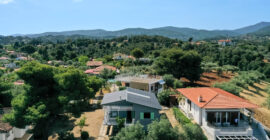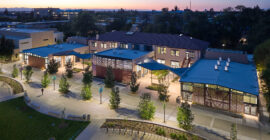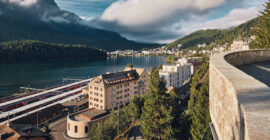The architecture of worship spaces has followed a long and particularly interesting trajectory in the Greek region since the establishment of the modern Greek state.¹ The strong tradition of Byzantine church architecture provides the frame of reference for Greek and foreign architects who sought to reinterpret the shell of Orthodox worship through the ideologies and artistic currents of their time. During the 19th century, Neoclassicism and Romanticism left a particularly compelling architectural and iconographic imprint on both large and small cities and rural settlements across Greece, following the models set by Christian Hansen, Lysandros Kaftantzoglou and, later on, Ernst Ziller in the capital. In the first two or three decades of the 20th century, national ideologies prompted a reevaluation of vernacular tradition and, consequently, a deeper investigation of Byzantine typologies, which were then reinterpreted through contemporary architectural currents such as German Jugendstil. Aristotelis Zachos emerged as the dominant figure of this shift.
The turn of the most talented young Greek architects toward European modernism in the 1930s – reflected in the design and construction of important public buildings for education, health, etc. – was not accompanied by comparable achievements in ecclesiastical architecture. The framework defined by the state and the official church appears to have been restrictive, leaving little room for interpretations or translations of Byzantine typology through modern morphology and the possibilities offered by reinforced concrete construction. Among the few exceptions are Nikolaos Mitsakis’s unbuilt proposal for the Evangelistria complex on the island of Tinos (submitted to the 1930–31 architectural competition) and the design of two small chapels in Athens (1932–34).²
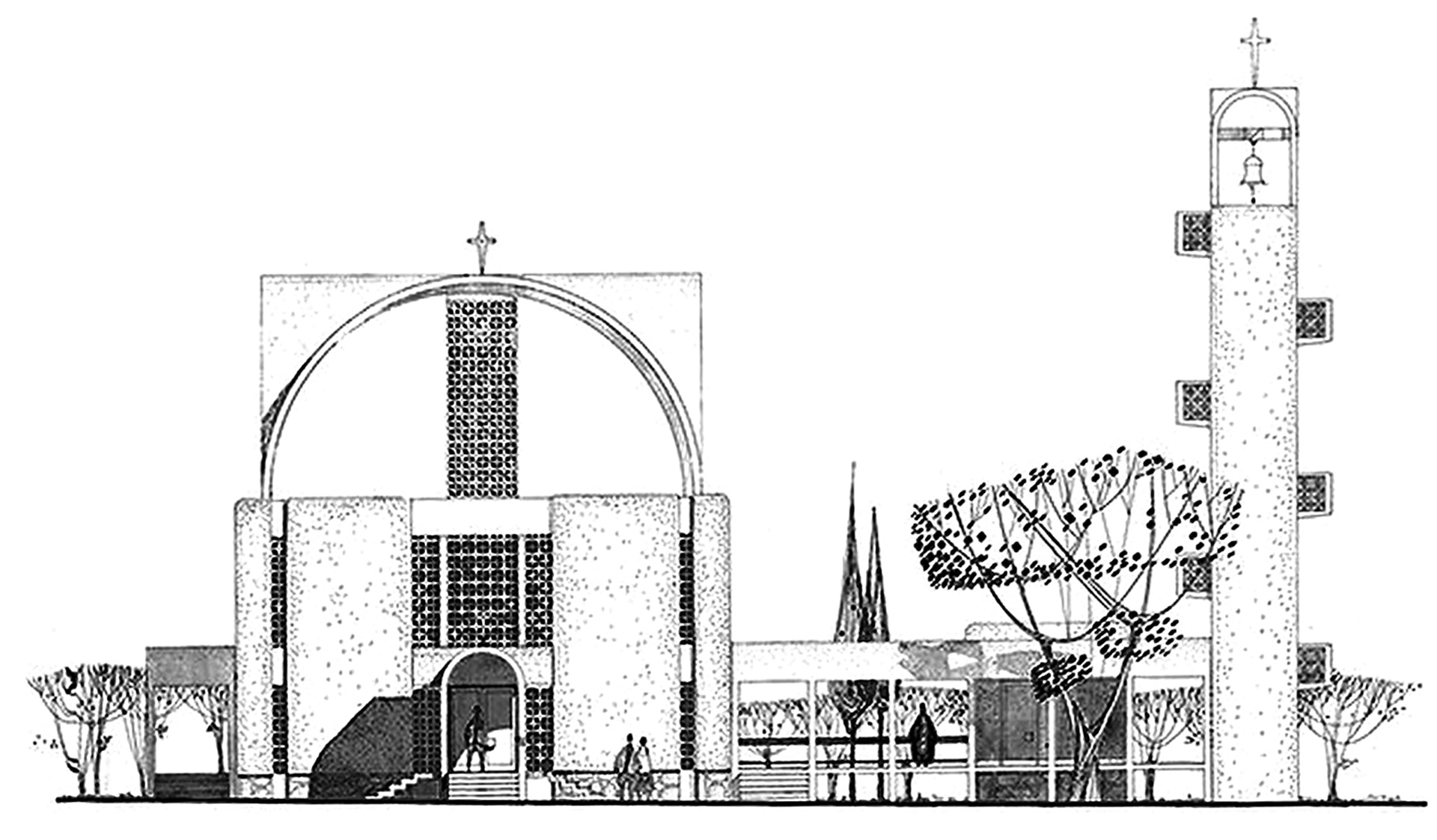
01 | Sthenis Molfesis – Thymios Papagiannis, Church of the Dormition of the Virgin, Ano Glyfada, design, 1961.
A major architect of the interwar period, Patroklos Karantinos, would later attempt a radical rethinking of worship-space design within the broader and diverse context of his postwar work.³ Inspired by contemporary international architectural achievements that explored the structural potential of reinforced concrete in self-supporting shells, he designed a series of small churches where, “liberated from any typological or morphological constraint,”⁴ he experimented with articulating a contemporary conception of sacred space (e.g., the church for the educational facilities of the Apostoliki Diakonia Foundation, Agia Varvara, Dafni, 1950; and the church in Archanes, Crete, 1952). In these studies – none of which were ever built – Karantinos, an architect with a deep appreciation for Russian Constructivism, seems more interested in the sculptural expression inherent in modern construction technology than in the mystical spatial experience of the Orthodox Christian church.
Karantinos’s work from this period remained isolated and did not influence the younger generation of architects who, from the end of the 1950s onward, would redefine Greek architecture during the postwar reconstruction era, aligning themselves with the developmental and modernization imperatives expressed by Western modernist paradigms. Indeed, the design of worship spaces appears to have occupied only a marginal position among the most influential architects of that generation. An exception is the design by Sthenis Molfesis and Thymios Papagiannis for the Church of the Dormition of the Virgin in Ano Glyfada (1961), an attempt to combine elements of Byzantine typology with modern construction techniques and morphology,an approach somewhat similar to that of Karantinos at Dafni.
Drawing from the syntax and forms of Aegean vernacular architecture, which were highly popular among young architects of the 1960s and validated by Le Corbusier, the small family chapel of the Niarchos family on Spetsopoula, designed by Vasilis Grigoriadis in 1963, is perhaps the most successful embodiment of the spirit of the times within a work of religious architecture, particularly through its attention to spatial transitions and the choreography of light in the interior.⁵ Years earlier, Perikles Sakellarios had offered a sensitively handled modernist interpretation of Aegean ecclesiastical architecture with the chapel of St. George of the LOK in Kavouri (1949–50).
The church of Notre Dame du Haut in Ronchamp (1955), and particularly its treatment of interior light, was, without doubt, one of Le Corbusier’s most influential works for these generations of Greek architects. Michalis Romanos attempted a Greek translation of this approach with his design for the Church of St. John in Heraklion, Crete (1966), a bold proposal that was never realized. Meanwhile, the Church of the Holy Cross in Papagou was erected with a daring form for its time, drawing inspiration from Oscar Niemeyer’s celebrated Church of St. Francis of Assisi in Pampulha (1940–43).
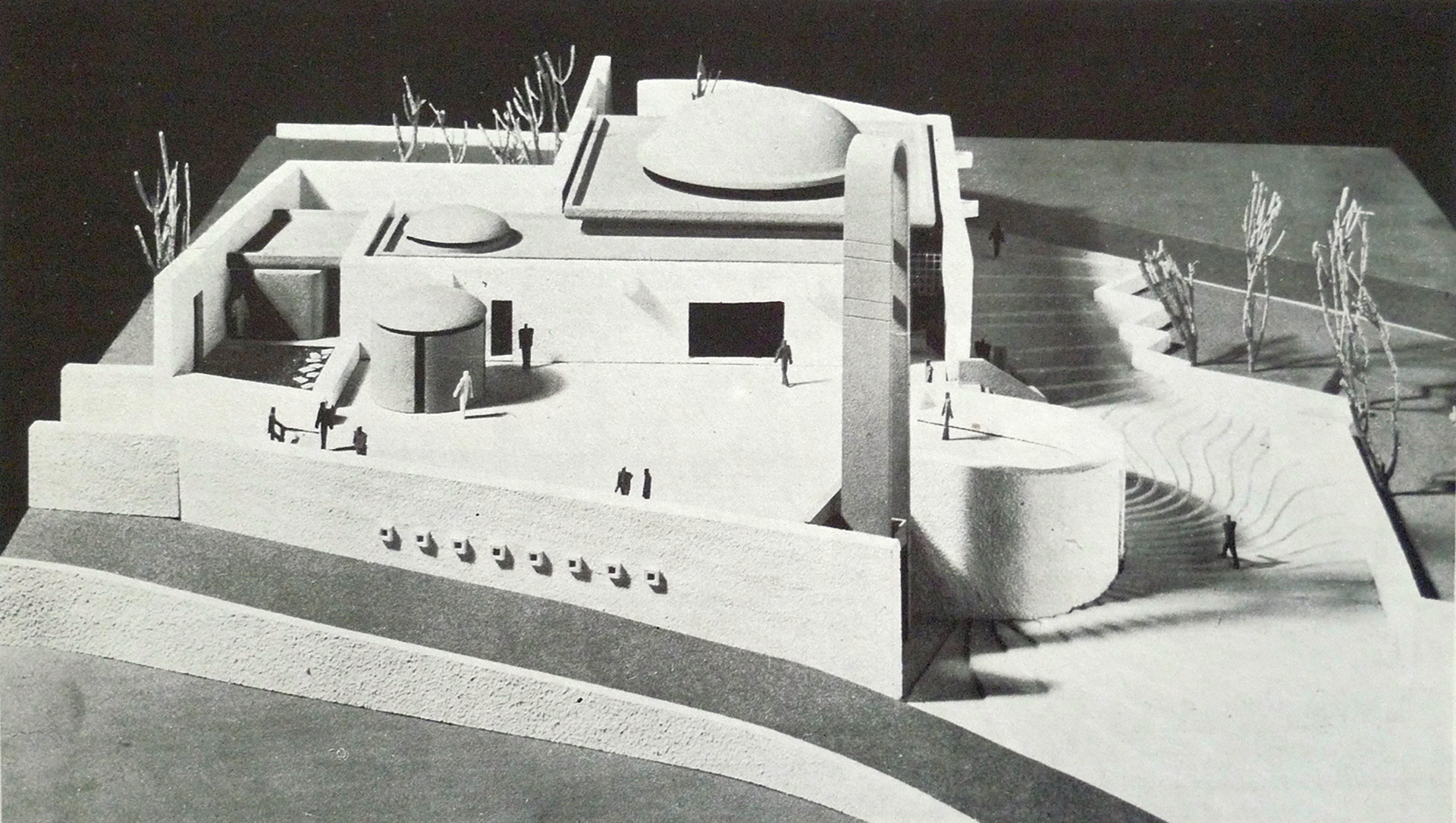
02 | OAOM, Church of St. Nektarios in Kamariza, Lavrio, project architect Elias Gounaropoulos, design, 1973.
More compelling, perhaps, are the designs and built works of architects for whom Byzantine mysticism and the symbolism of the Orthodox interior constituted an essential part of their personal metaphysical or “theological” inquiry, such as Kostis Gkartsos (born 1938) and Vasilis Giannakis (born 1931). Particularly bold, almost “anti-plastic”, is the massing of the small chapel for the Hellenic Air Force, which Giannakis built in 1960 at the summit of Mount Kithairon during his military service: the architect submits the composition to extreme syntactic and volumetric abstraction and to a raw handling of primary construction materials such as unfinished concrete and roughcast plaster. Crucial in this case is the manipulation of light, which enters the interior through two elongated slits between the dome and the northern and southern walls, creating the impression that the dome is floating: here, “the architectural elements dematerialize and are endowed with symbolic meaning.”
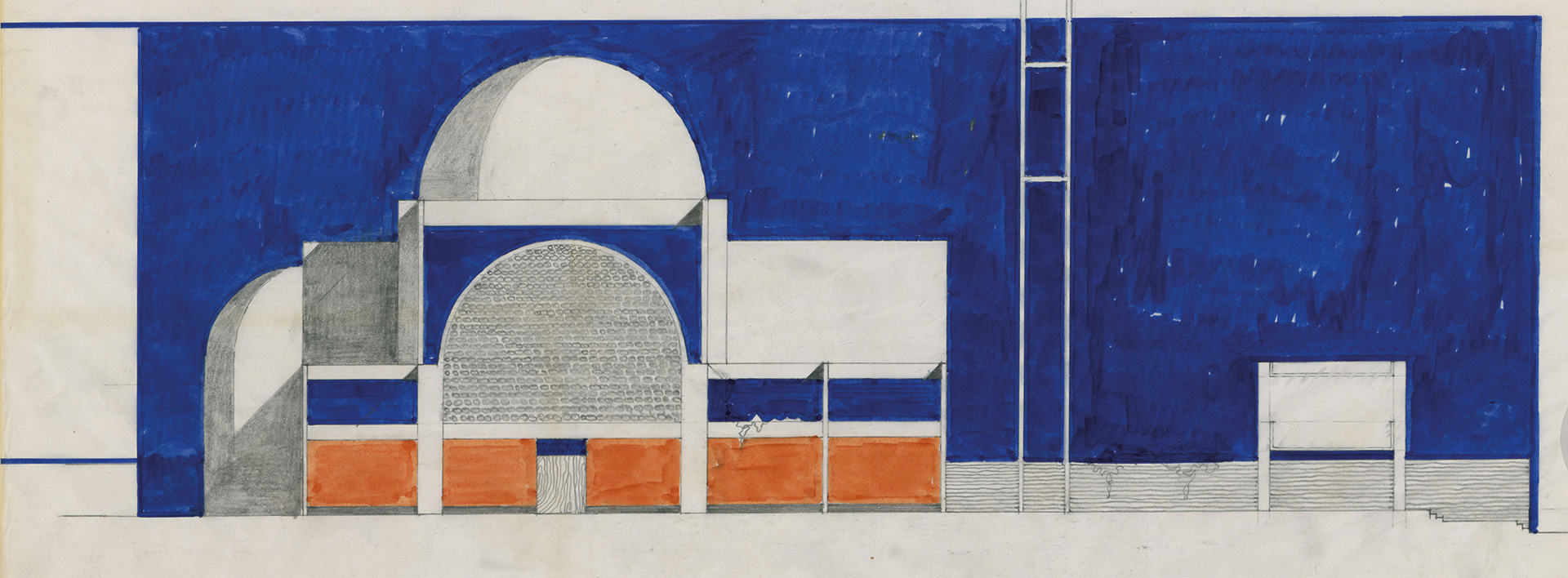
03 | OAOM, Iteration of the preliminary design for the Nea Makri Church, c. 1965.
In his design for the Church of St. Nektarios intended for the Holy Trinity Monastery in Aegina, Giannakis envisions a “social and cultural landmark.” The structure is set within a tall polygonal enclosure that, like a medieval wall, follows the site’s contour lines and becomes embedded in the natural and built surroundings as a “prominence”, both physical and symbolic, recalling the historic urban core of the Katapoliani church in Paros before its restoration. In the work of the Architectural and Urban Studies Group (OAOM, 1966–1975) of Gkartsos, Elias Gounaropoulos (1936–2018) and Makis Kostikas (b. 1939), a more or less bold attempt at typological renewal can be observed: their built proposals, such as the church in Poulithra, Kynouria (c. 1967), offer a modern reinterpretation of Neo-Byzantine domed architecture through the use of concrete, with notable interest in structural articulation and the handling of natural light in the interior.
Elsewhere, as in the Church of St. Nektarios in Lavrio (1973) and the Church of Prophet Elias in Metamorfosi (1973), structural exploration becomes more daring, with the increased dome spans pushing the material to its limits and with differentiated articulation of structural elements. Even more striking are three variations of the preliminary study for the Church of Nea Makri by Gkartsos, likely designed before the group’s founding (1966), which demonstrate a deeper structural and sculptural investigation of concrete shells verging on Expressionist treatment, although they were not ultimately realized. Several notable church designs in Cyprus during the 1970s, shortly before the Turkish invasion, may also be placed within this more loosely defined typological framework.

04 | Georgios Lavvas, Church of St. Paul at the Orthodox Center of the Ecumenical Patriarchate, Chambésy, Geneva, 1973–75.
In the Church of St. Loukas in Dasoupolis, Nicosia (1974), Neoptolemos Michaelides (1920–1993), an architect of the optimistic, internationalist postwar generation, explores the technological possibilities of self-supporting shells, designing a parabolic roof and avoiding Byzantine typology altogether. Once again, the sense of the transcendent is achieved through the manipulation of luminous slits within the concrete shell. The church in Famagusta by Theoharis David (1972–73), part of a larger complex, relies on a robust sculptural handling of the concrete envelope and the imposing presence of the structure within its context, recalling the well-known Brutalist church Sainte-Bernadette du Banlay by the French architect Claude Parent in Nevers (1963). Along similar lines and in the same period, Georgios Lavvas designed the Church of St. Paul at the Orthodox Centre of the Ecumenical Patriarchate in Chambésy, Geneva, following Byzantine typology in plan yet introducing an audacious sculptural gesture in the treatment of its ellipsoidal dome-like roof.⁶
During the final quarter of the 20th century, a large number of parish churches were built in Greece, all sharing a common feature: the effort to renew the morphology of the shell while remaining strictly faithful to traditional typologies.⁷ Although some examples are of interest (e.g., Church of Zoodochos Pigi in Trachones, Alimos, 1975–80, architect unknown), most are large, overly expressive, sometimes even “narcissistic”, exercises devoid of substantial spiritual content.
Truly thoughtful explorations of the relationship between the sacred and contemporary architectural expression are found in small projects, often chapels or holy springs, either designed or built. In the Chapel of the Democritus University of Thrace in Xanthi, designed by Tasos Biris and Sofia Tsiraki (1st prize in architectural competition, 1998), the central idea is the investigation of the notion of the chthonic as a constituent of the transcendent. The study belongs to a broader cycle of the Biris office that explored the architecture of “the excavation” – the firm’s entry for the New Acropolis Museum competition being the most notable among them. The metal Proskynitario in the cemetery of the settlement of Kamariotis in Crete, designed by Nikos Skoutelis and Flavio Zanon (2011–12), translates, according to the architects, “the form of the spindle of light from Byzantine iconography,” while the glass canopy of the Catacomb of St. John the Baptist in Hagia Sophia, Thessaloniki (1980s), constitutes an entirely contemporary geometric gesture in dialogue with the Byzantine church. Perhaps the most coherent proposal for a contemporary architectural expression of the sacred can be found in the overall work of Theoklis Kanarellis (b. 1960) and in his corpus of unbuilt studies for churches, chapels, monasteries, or crematoria, often produced for participation to architectural competitions.
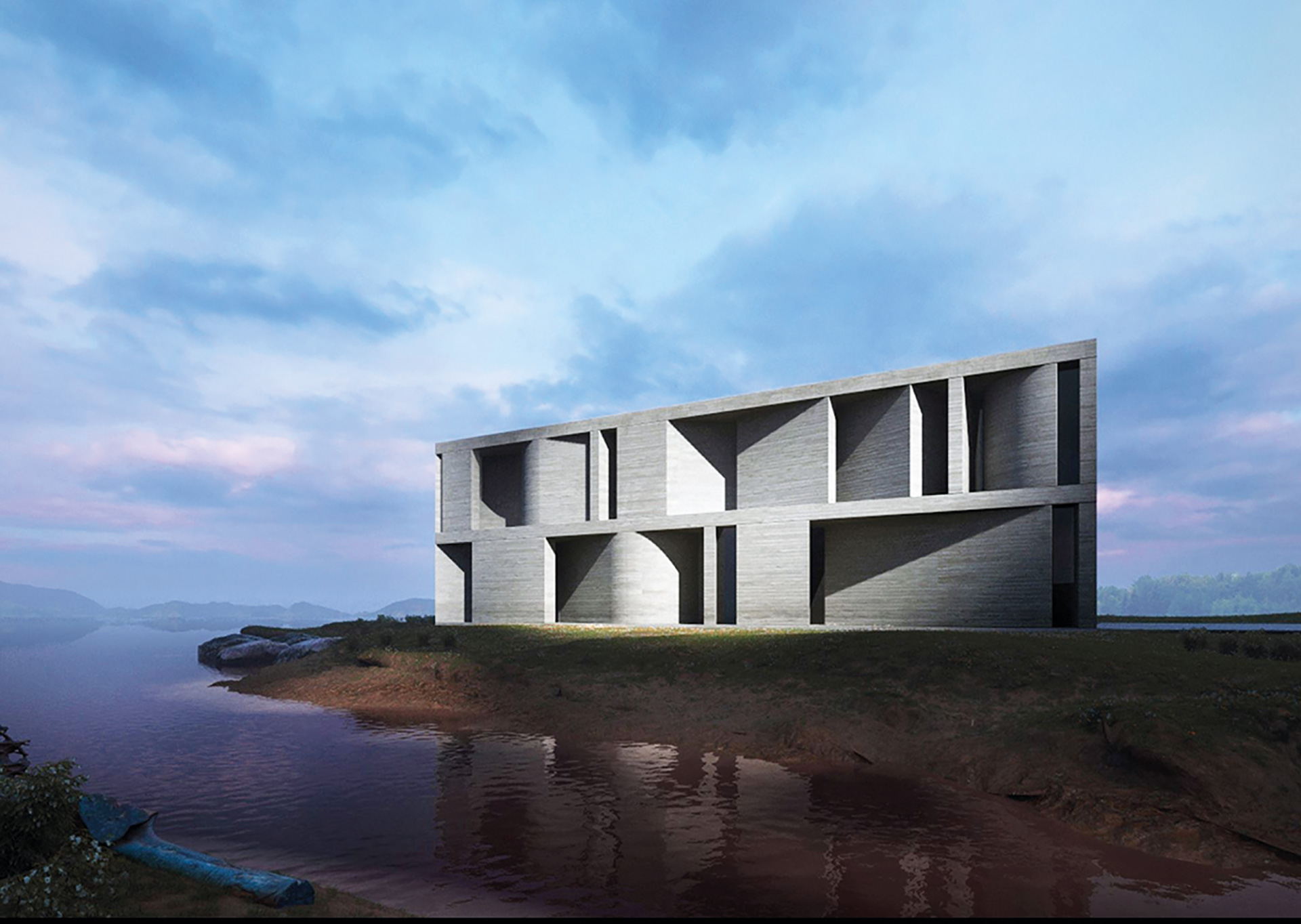
05 | Church of Saint Agatha, Rukomo, Nyagatare, Rwanda, international architectural competition, 2019.
Kanarellis, who studied architecture at the University of Minnesota in the United States, reflects on the spatial metaphors of the sacred, using architectural elements such as cuts, excavations, arcades, and passages that speak to light and its absence – shadow and darkness – , to “the city that pre-existed,” to the journey of life and death. His architectural “syntax”, a fundamental analysis of the components of construction (wall, cut, courtyard, corridor), assembles spatial episodes laden with philosophical or, more accurately, theological references, while rejecting any connection to Byzantine typology. “Sacred spaces,” writes the architect, “create their own homelands, symbols, laws – small exiles from the public gaze. They expand and alter the conventional and commonly accepted notions of time, place, and ethics. They are indifferent to the socially accepted normality of the present. The sacred is the transgression of the everyday.”⁸
Notes
- There is a fairly rich bibliography regarding church architecture in Greece during the 20th century. Recent student research projects, which demonstrate growing interest in the subject, are also of particular interest. Indicatively: Eirinaios Athanasopoulos, Contemporary Orthodox Ecclesiastical Architecture, supervisor: Manolis Korres, NTUA, School of Architecture, 2011; and Stefanos-Rutger Oor, Critique of Contemporary Orthodox Church Architecture, supervisor: Stavros Gyftopoulos, NTUA, School of Architecture, 2013.
- See: Christos Panousakis (ed.), Nikolaos Mitsakis 1899–1941, Athens: Benaki Museum, Documentation Centre of Modern Greek Architecture, 2009.
- On the postwar work of Karantinos, see: Andreas Giakoumakatos, Elements for Modern Greek Architecture. Patroklos Karantinos, Athens: Cultural Foundation of the National Bank of Greece, 2003, p. 393 ff.
- Ibid., p. 459.
- François Loyer describes the chapel on Spetsopoula as the most complete work of modern religious architecture and as “the first example of the rebirth of religious art” in Greece, see: François Loyer, L’architecture de la Grèce contemporaine, unpublished doctoral dissertation, Paris, 1966, pp. 1172–1174.
- See: Manos Mikelakis, “‘Expression’ by G.P. Lavvas. Continuity and Renewal in Orthodox Church Architecture,” Archaeology and Arts, 115/2010, pp. 79–82, available at: https://www.archaiologia.gr/wp-content/uploads/2011/07/115-13.pdf
- See: Eirinaios Athanasopoulos, Contemporary Orthodox Ecclesiastical Architecture, op. cit., pp. 67–79.
- https://www.arch.uth.gr/el/studies/course/680/8
Image sources
Cover, 03: Archive of Modern Greek Architecture, Benaki Museum, Archive of Kostis Gkartsos.
01, 02,: Author’s archive. 05: A. Giakoumakatos (2003), p. 458.
04: https://www.archaiologia.gr/wp-content/uploads/2011/07/115-13.pdf 25–28: https://triantafylloug.blogspot.com/2021/04/3.html
05: https://triantafylloug.blogspot.com/2021/04/3.html

